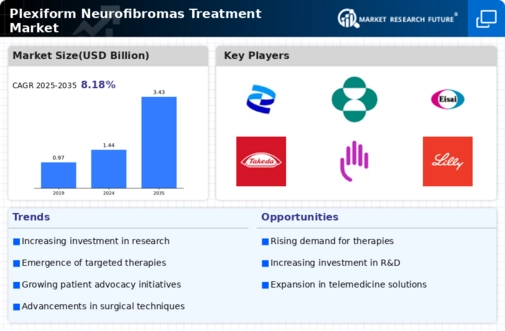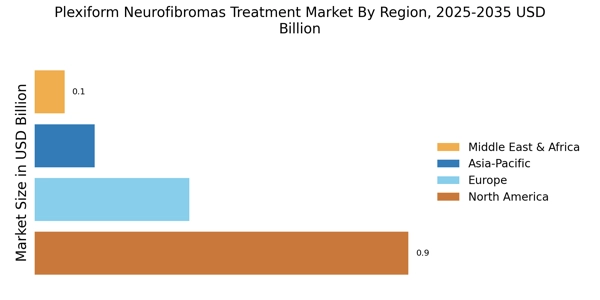Growing Awareness and Advocacy
The growing awareness and advocacy surrounding neurofibromatosis and plexiform neurofibromas are pivotal drivers for the Plexiform Neurofibromas Treatment Market. Advocacy groups and organizations are actively working to educate the public and healthcare professionals about the condition, which has led to increased diagnosis rates and treatment-seeking behavior among patients. This heightened awareness is crucial in promoting early intervention, which can significantly improve patient outcomes. Additionally, advocacy efforts are often accompanied by fundraising initiatives that support research and development of new therapies. As more individuals become informed about plexiform neurofibromas, the demand for effective treatment options is likely to rise, further propelling market growth.
Advancements in Genetic Research
Recent advancements in genetic research have significantly influenced the Plexiform Neurofibromas Treatment Market. The identification of specific genetic mutations associated with neurofibromatosis has opened new avenues for targeted therapies. For instance, the discovery of mutations in the NF1 gene has led to the development of therapies that specifically address the underlying genetic causes of plexiform neurofibromas. This shift towards precision medicine is likely to enhance treatment efficacy and patient outcomes. Furthermore, ongoing research into gene therapy and other innovative approaches may provide additional treatment options in the near future. As these advancements continue to unfold, they are expected to reshape the treatment landscape, driving growth in the market.
Rising Incidence of Neurofibromatosis
The increasing prevalence of neurofibromatosis, particularly type 1, is a notable driver for the Plexiform Neurofibromas Treatment Market. Recent estimates suggest that neurofibromatosis affects approximately 1 in 3,000 individuals, leading to a heightened demand for effective treatment options. As awareness of this condition grows, more patients are seeking medical intervention, thereby expanding the market. The need for specialized therapies to manage plexiform neurofibromas, which can lead to significant morbidity, is becoming increasingly apparent. This rising incidence not only drives the demand for existing treatments but also encourages research and development of novel therapeutic approaches. Consequently, the market is likely to witness a surge in investment aimed at addressing the needs of this patient population.
Regulatory Support for Innovative Therapies
Regulatory bodies are increasingly providing support for the development of innovative therapies within the Plexiform Neurofibromas Treatment Market. Initiatives aimed at expediting the approval process for breakthrough therapies are becoming more common, allowing for faster access to new treatment options for patients. This regulatory environment encourages pharmaceutical companies to invest in the development of novel therapies, including targeted treatments and gene therapies. The potential for expedited approval pathways not only enhances the attractiveness of investing in this market but also ensures that patients have timely access to effective treatments. As regulatory support continues to evolve, it is likely to stimulate further innovation and growth within the market.
Increased Investment in Research and Development
The Plexiform Neurofibromas Treatment Market is experiencing a surge in investment directed towards research and development. Pharmaceutical companies and research institutions are recognizing the unmet medical needs associated with plexiform neurofibromas, prompting increased funding for clinical trials and innovative treatment modalities. In recent years, the market has seen a rise in partnerships between biotech firms and academic institutions, aimed at accelerating the development of new therapies. This collaborative approach not only enhances the pipeline of potential treatments but also fosters a competitive environment that may lead to breakthroughs in the management of plexiform neurofibromas. As a result, the influx of capital into R&D is likely to drive market growth and improve patient care.


















Leave a Comment